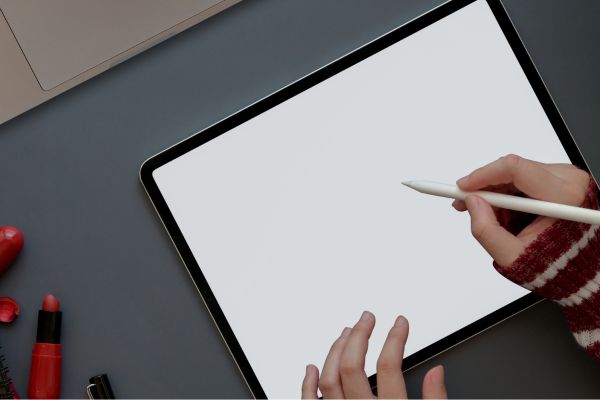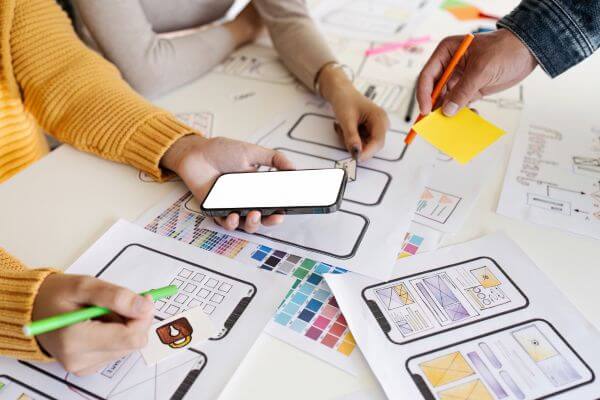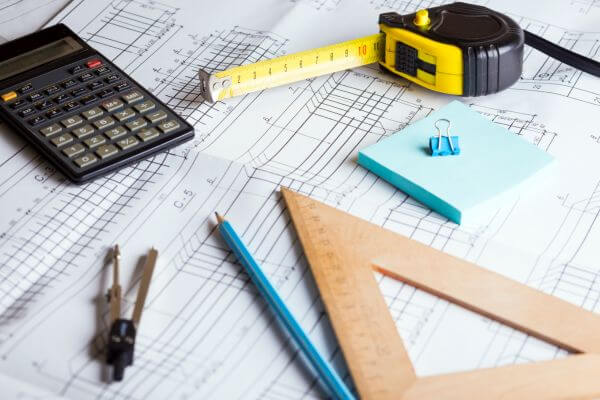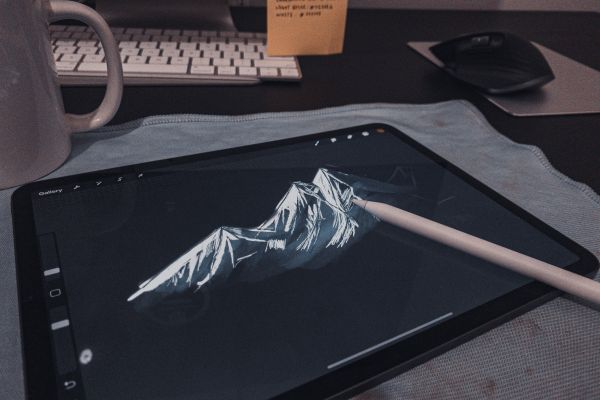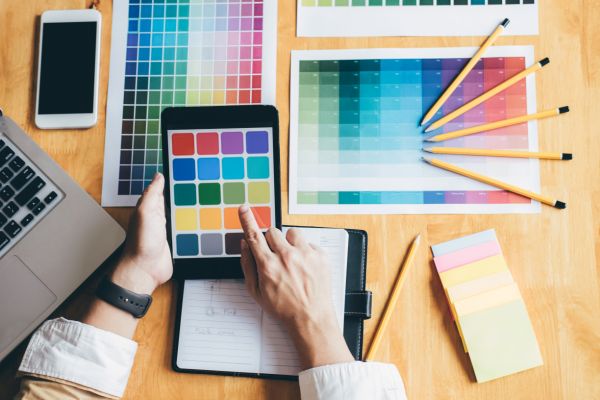The Ultimate Arsenal: Essential Tools for Every Freelance Designer
As a design freelancer, you know that having the right tools is essential to achieving success. Not only do they help speed up work, but they also enhance your productivity and creativity. In this article, we’ll explore some essential tips and tools that every freelance designer should have in their arsenal.
Key Takeaways:
- Having the right tools is essential to improving your work as a freelance design.
- An optimized work environment setup is essential for your productivity.
- There are plenty of software and tools exclusively for freelance designers that can help you create high-quality work.
- Building a strong portfolio is essential for attracting clients and showcasing your skills.
- Effective time management is crucial for meeting deadlines and maintaining work-life balance.
Setting Up Your Workspace for Success
Creating a conducive workspace is crucial for a design freelancer. Your workspace directly impacts your productivity, creativity, and overall well-being. By implementing the following practical tips and techniques, you can optimize your design freelancer workspace for maximum efficiency and inspiration.
Ergonomic Furniture
- Invest in a comfortable and supportive chair that promotes good posture and reduces the risk of back pain.
- Ensure your desk is at the correct height to avoid strain on your wrists and neck.
- Consider using an adjustable standing desk to vary your working position throughout the day.
Proper Lighting
- Position your workspace near natural light sources to benefit from daylight, which enhances mood and productivity.
- Supplement natural light with task lighting to minimize eye strain and create a well-lit environment.
Organizational Systems
- Use storage solutions such as shelves, drawers, and filing cabinets to keep your workspace neat and clutter-free.
- Utilize desktop organizers and trays to efficiently store and access frequently used tools and supplies.
Inspiring Decor
- Personalize your workspace with artwork, plants, or motivational quotes to create a visually appealing and inspiring atmosphere.
- Choose colors and textures that enhance focus and creativity, such as calming blues or energizing greens.
Remember, the optimal work environment is unique to each individual. Experiment with different setups, adapt to your preferences, and fine-tune your workspace until it best suits your needs. By creating an ideal work environment, you can enhance your productivity, creativity, and overall satisfaction as a design freelancer.
Essential Design Software and Tools
As a design freelancer, you understand the importance of utilizing the right software and tools to deliver exceptional work. The design industry is constantly evolving, and it is crucial to stay up to date with the latest technologies that can elevate your craft and streamline your workflow.
Graphic Design Software
Graphic design software plays a fundamental role in a freelancer’s toolkit. These tools allow you to create stunning visuals, manipulate images, and design logos, brochures, and marketing materials. Here are some of the top graphic design software options:
| Software Name | Key Features |
| Adobe Photoshop | Powerful photo editing and manipulation capabilities |
| Adobe Illustrator | Vector graphics creation for logos and illustrations |
| Canva | User-friendly platform for creating social media graphics and marketing materials |
| Sketch | Mac-only design tool for web and app interfaces |
Prototyping and Wireframing Tools
Prototyping and wireframing tools enable you to create interactive mock-ups and prototypes of websites and mobile apps. These tools are vital for presenting your design concepts to clients or stakeholders. Here are some popular options:
| Software Name | Key Features |
| Adobe XD | Allows for seamless design-to-prototype transitions |
| InVision | Collaborative platform for creating interactive prototypes |
| Figma | Cloud-based design and prototyping tool for teams |
| Balsamiq | Drag-and-drop wireframing software for quick idea validation |
Project Management Tools
Efficient project management is essential for freelancers handling multiple clients and assignments. Project management tools help you stay organized, track progress, and collaborate effectively. Consider incorporating these tools into your workflow:
- Trello: Simple yet powerful task management and collaboration tool
- Asana: Comprehensive project management software for teams
- Jira: Advanced tool for agile project management and issue tracking
- Monday.com: User-friendly platform for project planning and tracking
By equipping yourself with the right design software and tools, you can enhance your creative abilities, work efficiently, and deliver outstanding results. Remember to explore different options and find the tools that best suit your specific design needs and preferences.
Building a Strong Portfolio
A strong portfolio is the key to attracting clients and showcasing your skills as a design freelancer. When clients are searching for a designer to hire, they want to see examples of your previous work and understand your unique design style. Your portfolio acts as a visual representation of your capabilities, creativity, and expertise, making it essential to invest time and effort into its creation.
To build a compelling portfolio that truly showcases your work, consider the following strategies and tips:
- Showcase a diverse range of projects: Include a variety of projects in your portfolio that demonstrate your versatility as a designer. This could include different design styles, industries, or types of projects. By showcasing your ability to adapt to various design challenges, you can appeal to a broader range of clients.
- Highlight your best work: While it’s important to include a variety of projects, make sure to prioritize your best work. Choose projects that exemplify your skills, creativity, and problem-solving abilities. High-quality, visually engaging projects will leave a lasting impression on potential clients.
- Tell a story: Your portfolio should tell a cohesive story about your journey as a designer. Consider organizing projects in a way that flows logically and showcases your growth and progression over time. This narrative can help clients understand your thought process and the evolution of your skills.
- Include detailed project descriptions: Alongside each project, provide concise and informative descriptions that explain the objectives, challenges, and results of your work. This will help potential clients understand the context and impact of each project and highlight your ability to think critically and strategically.
- Show your process: Clients are often interested in seeing your design process and methodology. Include sketches, wireframes, or mockups that demonstrate how you approach a project from initial concept to final design. This not only showcases your technical skills but also offers insights into your creative thinking.
By following these strategies and tips, you can build a portfolio that effectively showcases your design skills, creativity, and expertise. Remember to regularly update your portfolio with new projects as you continue to grow as a design freelancer.
Effective Time Management Strategies
As a design freelancer, optimizing productivity and effectively managing your time is key to meeting deadlines and maintaining a healthy work-life balance. To ensure you make the most of your time, consider implementing the following strategies:
1. Prioritize Your Tasks
Start each day by identifying the most important tasks that need to be completed. Prioritize them based on urgency and importance. By tackling high-priority tasks first, you’ll avoid being overwhelmed and ensure essential work gets done.
2. Create a Schedule
Develop a structured schedule that includes dedicated time slots for different projects and tasks. Establishing a routine helps you stay organized and provides a clear roadmap for your work. Use digital calendars or productivity apps to manage your schedule effectively.
3. Break Down Projects
Large projects can be overwhelming, and it’s easy to get lost in the details. Break them down into smaller, manageable tasks and create a timeline for completing each milestone. This approach not only makes the project more digestible but also allows for better tracking of progress.
4. Eliminate Distractions
Minimize distractions by creating a focused work environment. Find a quiet space, turn off notifications on your phone, and close unnecessary tabs on your web browser. By removing potential distractions, you can maintain better concentration and complete tasks more efficiently.
5. Practice Time Blocking
Time blocking is a technique where you allocate specific blocks of time for different activities. Set aside uninterrupted periods for focused work, client meetings, and administrative tasks. This approach helps you better manage your time and prevents tasks from bleeding into each other.
6. Delegate and Outsource
Recognize that you can’t do everything yourself. Delegate tasks that can be handled by others, such as administrative work or research, to free up your time for more important design-related tasks. Additionally, consider outsourcing certain tasks to specialized professionals to optimize your productivity.
7. Take Regular Breaks
Avoid burnout by incorporating regular breaks into your work schedule. Short breaks allow your mind to rest and recharge, ultimately boosting your productivity. Experiment with different break durations and find what works best for you.
8. Use Productivity Tools
Take advantage of productivity tools and software that can streamline your workflow and help you manage your time effectively. Design-specific tools like project management software, time tracking apps, and collaboration platforms can enhance your efficiency as a design freelancer.
By implementing these time management strategies, you can optimize your productivity, meet your deadlines, and maintain a healthy work-life balance. Efficient time management is the key to success for every design freelancer.
| Time Management Strategies for Freelancers: |
| Prioritize Your Tasks |
| Create a Schedule |
| Break Down Projects |
| Eliminate Distractions |
| Practice Time Blocking |
| Delegate and Outsource |
| Take Regular Breaks |
| Use Productivity Tools |
By implementing the tips and utilizing the essential tools discussed in this article, you can unlock your true potential as a design freelancer. These tools and strategies will not only help you elevate your craft but also enhance your productivity, allowing you to thrive in the competitive design industry.
Setting up a well-designed and organized workspace is crucial for creating the optimal work environment. By following the practical tips mentioned in Section 2, you can create a workspace that fosters creativity and productivity, setting yourself up for success.
In Section 3, we explored the must-have design software and tools that can take your work to the next level. Whether it’s graphic design, prototyping, or project management, having the right tools at your disposal empowers you to deliver high-quality work and streamline your workflow.
A strong portfolio is essential for showcasing your skills and attracting clients. Section 4 provided valuable strategies to build a compelling portfolio that highlights your unique style and expertise, enabling you to stand out in the crowded design market.
Lastly, Section 5 focused on effective time management strategies tailored specifically for design freelancers. By mastering time management techniques, you can optimize your productivity, meet deadlines with ease, and maintain a healthy work-life balance.
Remember, the journey of a design freelancer is a continuous learning process. Stay up to date with the latest trends and refine your skills to stay ahead in this ever-evolving industry. Congratulations on taking the first step towards your thriving design freelance career!
